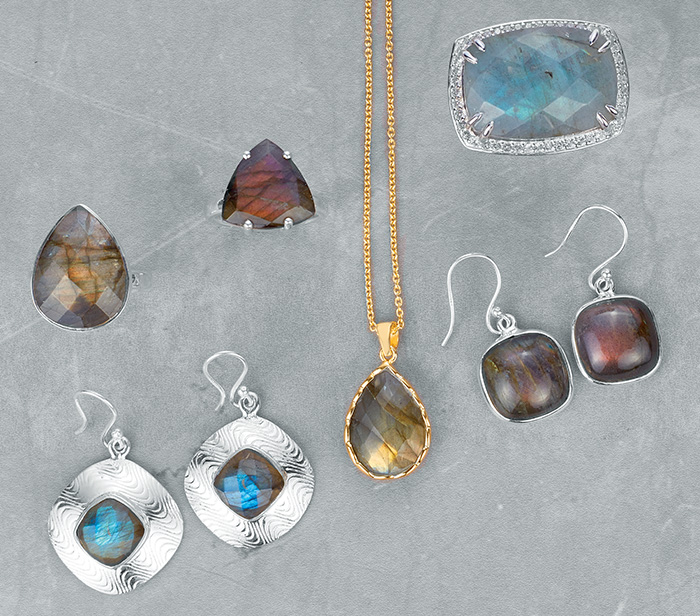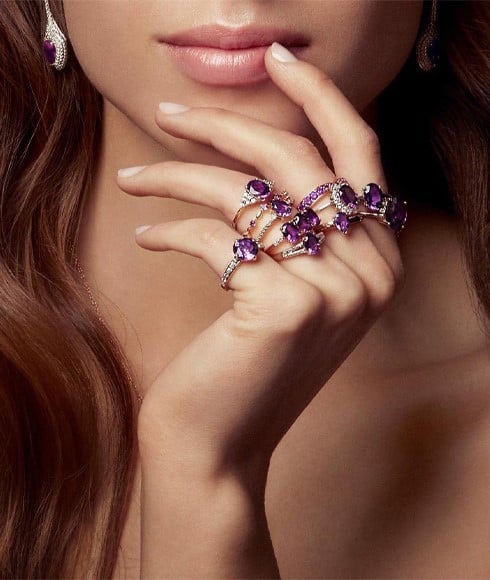The word 'labradorescence' comes from the gemstone Labradorite, a gem which demonstrates the very best examples of this wonderful visual effect. Labradorite creates a metallic-like shimmer of blues and greens on or near the surface of a gem.
This phenomenon is a type of iridescence caused by repeating, microscopically thin layers at the surface of a gemstone. The term labradorescence was coined in 1924 by mineralogist Ove Balthasar Bøggild who defined it as follows:
"…the peculiar reflection of the light from submicroscopical planes orientated in one direction (rarely in two directions); these planes have never such a position that they can be expressed by simple indices, and they are not directly visible under the microscope."
Labradorescence is a type of adularescence, which can be seen in other members of the Feldspar family, such as Moonstone.

The finest pieces of Labradorite have a truly striking appearance. Skilled lapidarists take care to orientate the gemstone to the best advantage when faceting the gem. Labradorite which shows spectacular labradorescence is sometimes known as Spectrolite.
Labradorescence is an incredibly captivating visual effect, and one of the most striking treasures gifted from Mother Nature.
Explore our Labradorite jewelry here.
MORE GEMSTONE PHENOMENA
Asterism
Aventurescence
Chatoyancy
Fluorescence and Phosphorescence
Polymorphism
Tenebrescence
Twinning

